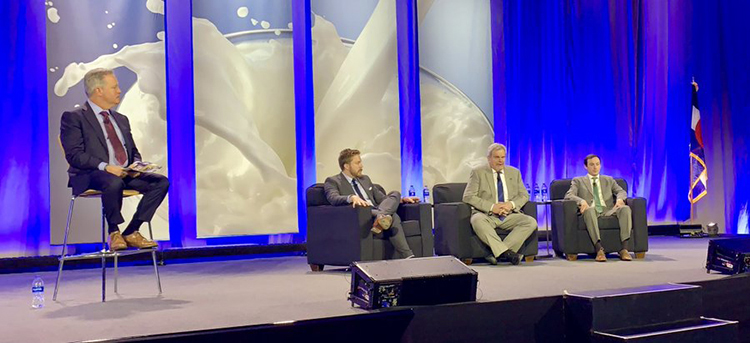
“We’ve had a record milk price year,” stated Jim Mulhern, president and CEO of the National Milk Producers Federation (NMPF). “It’s great to have a year when the per hundredweight milk price starts with the number ‘2,’” he went on to say at the annual gathering of NMPF, the National Dairy Promotion and Research Board, and the United Dairy Industry Association.
While many factors have contributed to record milk prices, the milk supply tops the list.
“The most influential aspect of the U.S. dairy situation over the past year has been the persistent milk production below year-ago levels,” stated Peter Vitaliano, NMPF’s vice president of economic policy and market research. “The tight milk production has generated very high milk and dairy product prices.”
While market stability prevailed during the first half of the year, Class III cheese milk and Class IV butter-powder prices are once again diverging, and that’s leading to depooling like in 2020. Last time around, high Class III prices caused milk to be depooled. Now, Class IV is taking its turn.
“Class IV prices have risen above Class III prices, causing Class IV milk to depool, and that is causing problems with the Class I mover again,” Vitaliano pointed out to the 750 attendees gathered in Aurora, Colo. This year, some new cheese plants also came online. As a result . . . “Available milk for manufacturing has been channeled preferentially to cheese production and less to butter-powder,” explained Vitaliano.
High milk prices and escalating transportation costs are now being seen in the grocery aisle. While the general cost of living has climbed 8%, and all food and beverage is up 13%, dairy inflation has taken off at a faster clip as of late. In fact, inflation climbed to 16% for the entire dairy category based on September retail prices. Butter leads the dairy product mix at 27%.
“Inflation will cause consumers to trade down the food value chain,” predicted Stephen Cain, NMPF’s director of economic research and analysis.
What about next year?
“The current expectation is that prices should hold through the upcoming holiday season, then fall again into the new year,” shared Vitaliano.
How far prices will fall is the unanswered question.
“We will experience a whole lot of volatility moving into next year. It could be a rocky ride,” said Will Loux, NMPF’s vice president of global economic affairs. Loux advised dairy farmers to employ risk mitigation tools for both milk sales and inputs, especially feed, in 2023.








